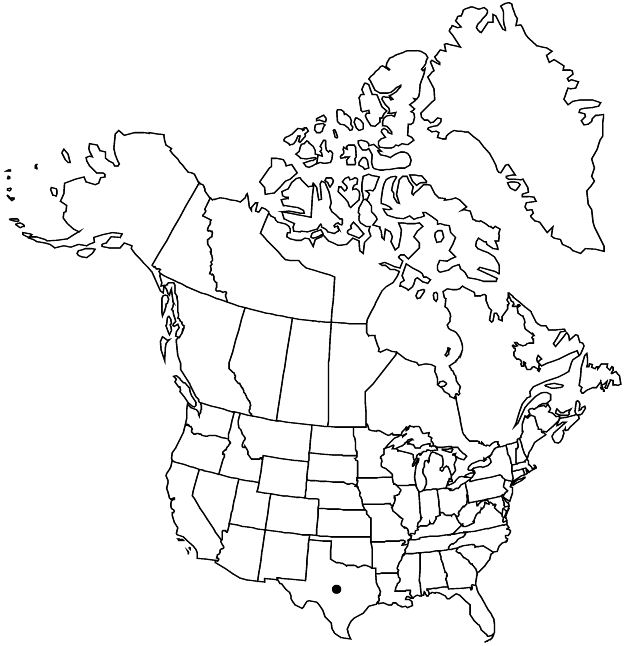Euphorbia jejuna
SouthW. Naturalist 5: 97, fig. [p. 98]. 1960.
Herbs, perennial, with woody or fibrous-fleshy, napiform, branched or tuberous taproot, 3–15 mm thick. Stems ascending to erect, densely emerging from woody crown, 5–15 cm, glabrous. Leaves opposite; stipules connate into lacerate or 2-fid, lanceolate or deltate scale, 0.5–0.9 mm, glabrous; petiole 0.3–0.9 mm, glabrous; blade orbiculate-obovate, ovate, or elliptic, 3–6(–8) × 1.8–5 mm, base moderately asymmetric, rounded to truncate, margins entire, apex blunt to acute, surfaces glabrous; 2–3-veined from base but usually only midvein conspicuous. Cyathia solitary at distal nodes; peduncle 0.8–1.5 mm. Involucre broadly campanulate, 1.2–1.5 × 0.8–1.2 mm, glabrous; glands 4, yellowish to green or purplish, oblong, 0.2–0.4 × 0.5–1 mm; appendages erect or spreading, white, 0.3–0.6 × 0.8–1.2 mm, usually deeply dissected into 4–5 acuminate lobes, rarely undivided, when divided distal margin rarely entire or crenate. Staminate flowers 12–35. Pistillate flowers: ovary glabrous; styles 0.4–0.5 mm, unbranched thickened-clavate. Capsules ovoid and broadly triangular, 1.8–2.2(–2.7) × 1.5–2.1 mm, glabrous; columella 1.5–2.2 mm. Seeds whitish, oblong, 4-angled in cross section, adaxial faces concave, with long raphe between, 1.5–2(–2.3) × 0.6–0.8 mm, dimpled with faint irregular transverse wrinkles or with up to 10 low, rounded transverse ridges.
Phenology: Flowering and fruiting early spring–summer.
Habitat: Thin calcareous soils (caliche) on limestone hills.
Elevation: 500–900 m.
Distribution

Tex., Mexico (Chihuahua, Coahuila).
Discussion
Euphorbia jejuna is known in the flora area from only a few collections in Mitchell, Nolan, Terrell, and Val Verde counties. The species is very similar to E. astyla, but differs in its more deeply divided involucral gland appendages and more definitely petiolate, rounder leaves.
Selected References
None.